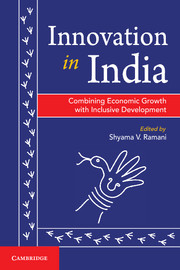I - Setting the background
Published online by Cambridge University Press: 05 July 2014
Summary

- Type
- Chapter
- Information
- Innovation in IndiaCombining Economic Growth with Inclusive Development, pp. 37 - 104Publisher: Cambridge University PressPrint publication year: 2014

